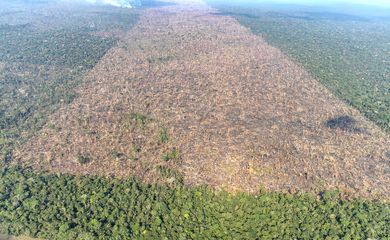Severe drought warning issued for Amazon also this year

The below-average rainfall rates in much of the Amazon region, coupled with forecasts of above-normal temperatures, are already a cause for concern for the authorities with the arrival of the drought season in 2024.

The Management and Operational Center of the Amazon Protection System (Censipam) has alerted civil defense agencies of the need for preventive measures and assistance to remote communities.
The Amazon drought season takes place in the second half of the year, along with the peak ebb of the region’s main rivers, usually from October to November. In 2023, the Amazon had already faced one of the worst droughts in its history, with a drastic reduction in river levels, affecting transportation for riverside communities and as a result their access to water, food, and medicine.
Studies point to a circumstances rather similar to last year’s in the region, Censipam analyst Flavio Altieri pointed out. “We have the effects of the El Niño still interfering in the region, in addition to the warming of the North and South Atlantic [oceans], which also interferes with little rain in the Amazon.”
In the 12 months up to April this year, the National Water and Sanitation Agency recorded a 27 percent deficit in rainfall. According to Alan Vaz Lopes, superintendent for Critical Events Operations, the rivers in the Amazon region, despite having extremely large volumes, are quite sensitive to lower rainfall. “A small rainfall deficit at any given time causes a sharp reduction in water levels and river flow. That’s why we see huge rivers experiencing a really rapid reduction in water levels.”
Immediate effects
The severe drought can have an immediate impact on river navigability, experts argued. “The most isolated populations are affected the most, because, as the rivers become unnavigable, people have a hard time getting around to buy consumables,” Altieri explained.
The region’s economy could also come under distress, the analyst added. The Solimões, Amazonas, Madeira, and Tapajós rivers alone have 4,695 kilometers of waterways, through which 78.2 million tons of cargo were transported last year—55 percent of what was moved within the country in this way. “In the case of the Madeira river waterways, when they reach a level below four meters, night navigation is already interrupted. As it gets lower, it can come to a complete halt. The same thing happens in the Tapajós basin,” Altieri warned.
Energy
Brazil’s energy supply is another sensitive sector, as the Amazon is home to 17 hydroelectric plants, comprising 23.6 percent of consumption in the national system. Even though other generation structures can cover an eventual interruption, such changes are bound to have a countrywide impact.
The seasonal drought in the Amazon comes in uneven stages. As a result, indicators vary from period to period. Altieri noted, however, that “most of the hydroelectric plants are on the rivers of the Araguaia-Tocantins Basin and, despite the fact that the level is lower than last year, the levels are still satisfactory for generating energy,” he said.
On the other hand, planning is required to ensure for food and drinking water, as the region has 164 surface water catchment points that could also be affected by severe drought. “As the river is the access route for most of the isolated communities, planning becomes a good idea to allow supplies like food and drinking water to be transported early and also to reduce the impact on these people,” he stated.





